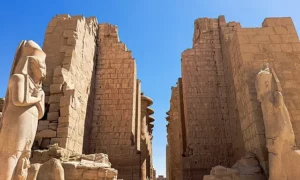The Karnak Temple Complex, situated near Luxor, Egypt, represents one of the most astonishing architectural achievements of ancient Egypt. Its construction spanned from the Middle Kingdom, specifically during the reign of Senusret I (1971–1926 BC), through to the Ptolemaic Kingdom (305–30 BC). However, the majority of the existing structures were erected in the New Kingdom period. The site, originally known as Ipet-isut, meaning “The Most Select of Places,” served as the primary worship location for the Theban Triad, with the god Amun at its helm. Recognized for its monumental significance, Karnak, along with the rest of Thebes, was designated a UNESCO World Heritage Site in 1979.
The Ancient Egyptians
Ancient Egyptian Historical Sites and Ruins
Egyptian Mythology
Ancient Egyptian Artifacts
| Ankh Cross |
| Dream Stele |
Historical Figures
| Ramses II |
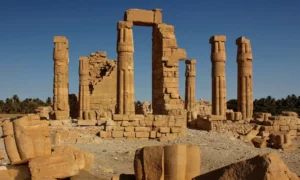
Soleb
Soleb is an ancient site in modern-day Sudan, known for its temple ruins. The Egyptians built the temple during the reign of Amenhotep III in the 14th century BC. It served as a symbol of Egyptian power and religious devotion. Over time, the temple fell into disuse and was buried by the sands of the desert. Archaeologists rediscovered it in the 19th century, revealing its historical significance. Soleb provides insights into ancient Egyptian architecture, religion, and their reach into Africa.
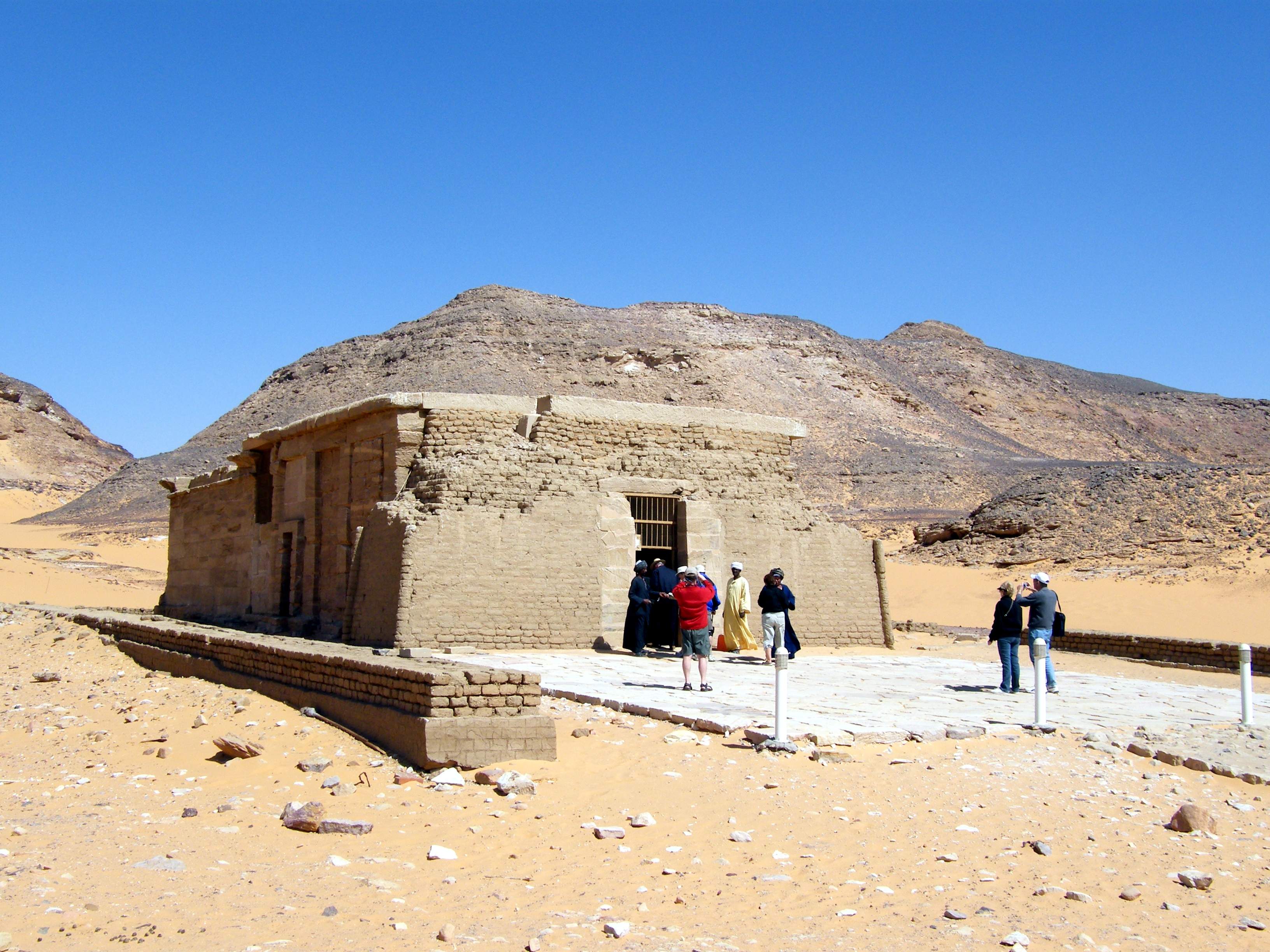
Temple of Amada
The Temple of Amada, the oldest Egyptian temple in Nubia, stands as a testament to ancient civilization’s grandeur. Pharaoh Thutmose III erected it during the 18th Dynasty, and later, Pharaoh Amenhotep II enhanced it. The temple’s relocation in the 1960s to save it from the rising waters of Lake Nasser is a remarkable feat. It showcases intricate carvings and inscriptions, offering insights into Egypt’s religious practices and political history.
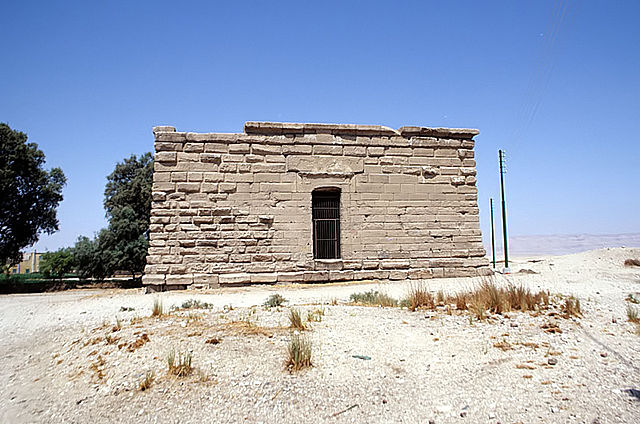
Deir el-Shelwit
Deir el-Shelwit is an ancient Egyptian temple located on the west bank of the Nile, near Luxor, Egypt. It is dedicated to the goddess Isis, a major deity in the Egyptian pantheon. This small and relatively lesser-known temple stands out for its late construction, dating back to the Roman period in Egypt. Despite its size, Deir el-Shelwit is significant for its well-preserved wall reliefs and inscriptions, which provide insights into the religious practices of the time.
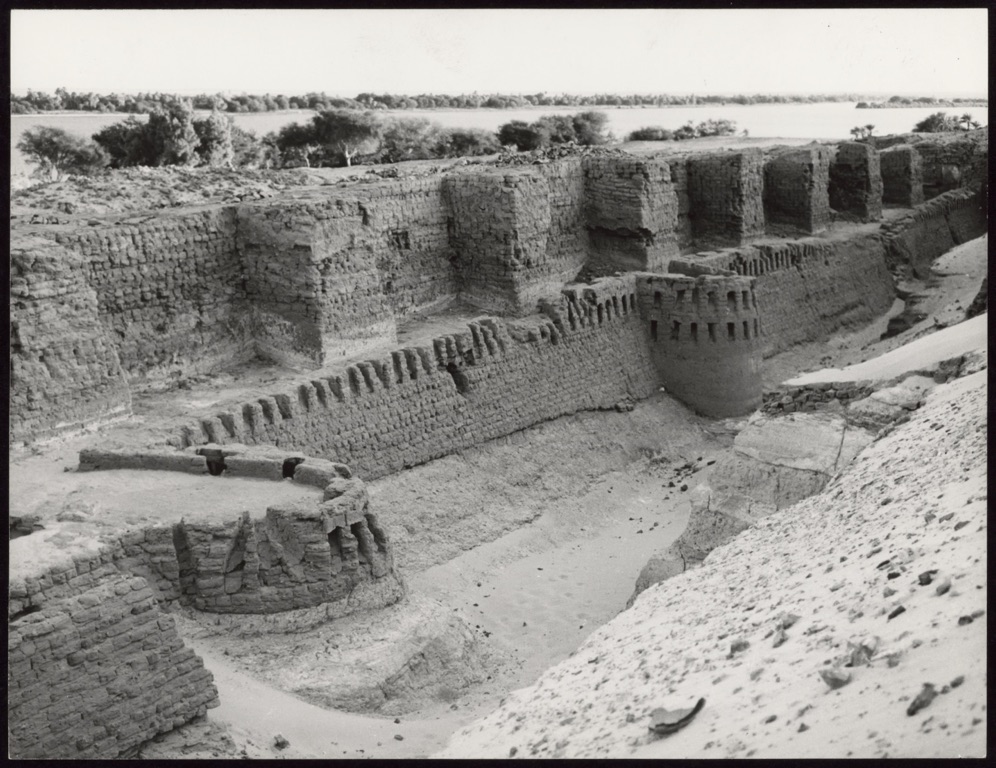
Buhen
Buhen was an ancient Egyptian settlement situated on the West bank of the Nile below the Second Cataract. It’s known for its impressive fortress, which the Egyptians built during the Middle Kingdom. This site played a crucial role in Egypt’s military and trade activities, particularly in Nubia. The fortress at Buhen was part of a series of fortifications that served as a defense line and a means to assert Egyptian presence in the region. Over time, Buhen became a significant commercial and military hub, reflecting the complex interactions between Egypt and Nubia.
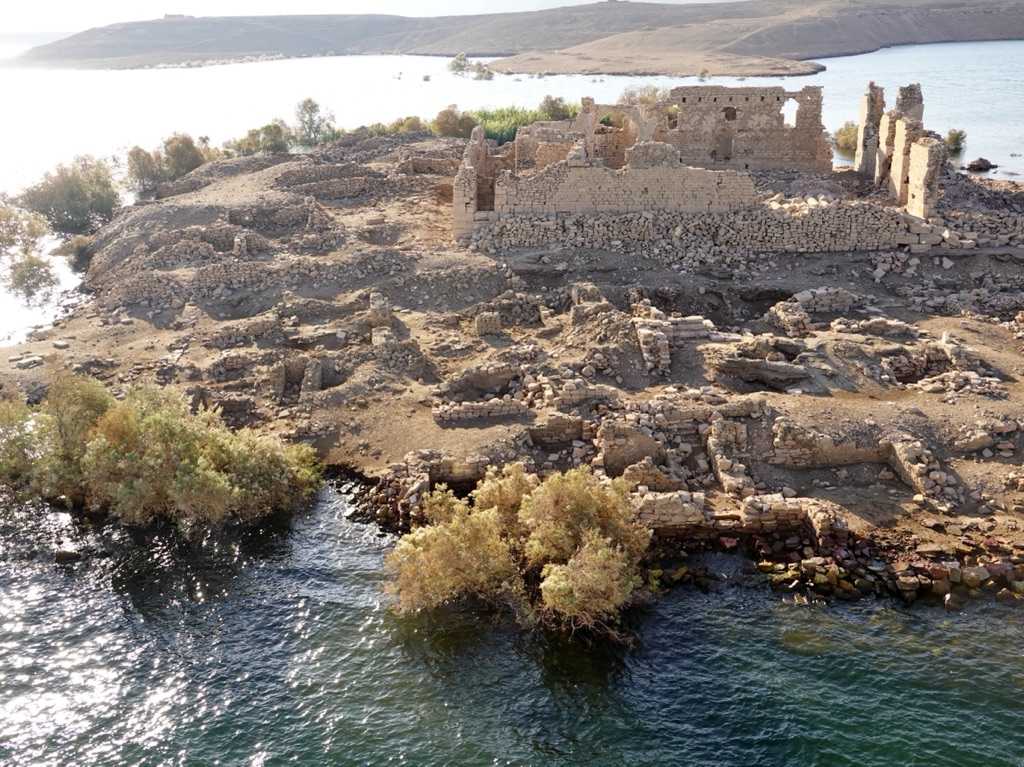
Qasr Ibrim
Perched on a cliff above the Nile, Qasr Ibrim stands as a silent sentinel to the history of Nubia. This ancient site, once a major city of the Meroitic kingdom, later became a strategic Roman stronghold and an important Christian center. Over time, it evolved into an Islamic outpost. Its layers of occupation offer a rich tapestry of cultural history, preserved in the arid climate of southern Egypt. Archaeologists have unearthed texts, frescoes, and artifacts that provide a window into the lives of its past inhabitants. Qasr Ibrim’s significance is not only in its continuous occupation but also in the stories of cultural exchange and conflict it tells.

